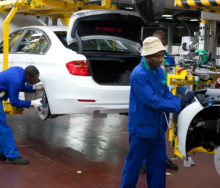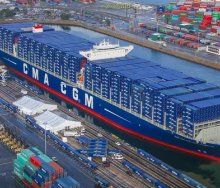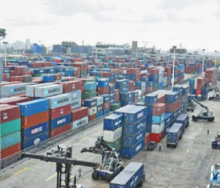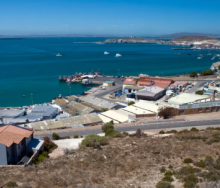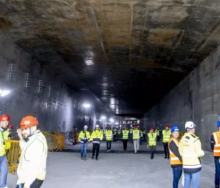An overreliance on automation and a failure to prioritise people by fostering a strong working culture of camaraderie and company commitment could put supply chain concerns at risk when agility and resilience are most needed.
This was especially noticeable at a time when disruption had become the norm and setbacks were par for the course in a post-Covid world, Vanya Jansen of Optigrow told a supply chain gathering at the recent Sapics Spring Summit.
The managing director who was responsible for running distribution centres (DC) for large retail concerns such as Pep Stores, said a series of Black Swan events since the coronavirus pandemic of 2020 had underpinned the importance of good people.
She said during the KwaZulu-Natal riots of June ’21, her previous employer had enough firepower to keep rampaging looters from breaching, plundering and destroying a facility handling about 40 to 50 containers a day, from which about 60% of Pep’s clothing is dispatched.
Although the necessary security response was in place, the DC personnel “were there to take ownership”, Jansen said.
“A lot of our staff came in and protected the facility for us.”
In a separate incident, an armed robbery “saw 21 people enter one of our facilities with AK47s.
“They were sophisticated. They knew what they were doing, what they were looking for, and they came in to take it. One of my staff members phoned me and said: ‘Vanya, I’ll make sure they won’t take anything.’”
She said this call came through while the robbery was in place.
“I told the staff to go and lock themselves in the safe.”
In the end, the robbers took nothing.
When incessant rain caused a deluge in April ’22, forcing Vanya and her team to find missing staffers by deploying divers in their flooded 60 000-square-metre DC to assist in the recovery, employees once again rallied around to help once the water had subsided, accompanied by relatives providing additional support.
When Jansen decided to do her master’s degree based on why some companies manage to bounce back from disruption better than others, she found that it generally boiled down to the same thing—the human spirit.
“After the riots I saw how some retailers with over 500 stores managed to open 80% of their stores within three months. *Others took more than six months to open a fraction of their stores.”.”
Asked why this was the case, Jansen said it was encouraging to see how many people had a sense of community through the companies that kept their families going.
It was the same after the floods.
“Whole families came with their brooms and mops they had bought with their own money. Aunties, uncles, grannies, all pulled in and cleaned up.”
She said it was interesting to note the current debate about automation vs standardisation, and to what extent people still played a role in critical decision-making, something she believes is only possible through agility and resilience.
“Supply chain disruption has massive financial implications. By the time you realise that the paw-paw has hit the fan, it’s too late. You have to be able to predict it; you need to have the foresight to navigate through it.”
Jansen said although technology would always have a role in understanding the data environment, on-the-spot leadership and direction would always be required to steer the ship through stormy seas.
“It has to start with leadership and creating a culture of resilience and agility, the ability to move quickly, to interpret the situation around you and find a solution to move through it.”
She said that although humans like to add layers of complexity to situations because it makes them feel they have accomplished something, paradoxically, it is often plain old simple and straightforward lateral thinking that saves the day.

